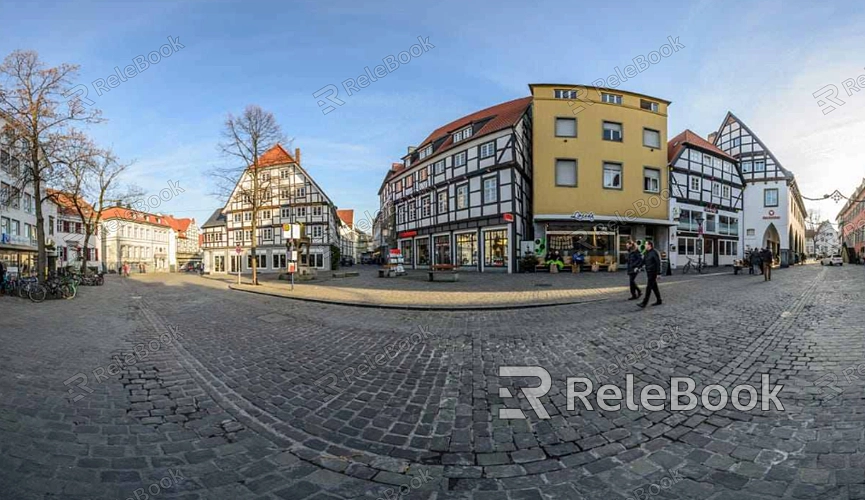What is HDR Peak Brightness
In the realm of 3D modeling and rendering, especially within architectural visualization, filmmaking, and game development, designers frequently grapple with complex lighting scenarios. This is where HDR peak brightness becomes particularly crucial. HDR peak brightness refers to the maximum brightness level that a display or image can achieve when showing the brightest parts of a scene. This concept is essential for rendering high-contrast scenes effectively. In this article, we'll explore the definition of HDR peak brightness, its applications, how it’s used in various 3D software, and strategies for optimizing its implementation.

1.Understanding HDR Peak Brightness and Its Importance
Definition: HDR peak brightness is the maximum brightness level that the brightest parts of an image or display can reach. Measured in nits, higher values indicate stronger representation of bright areas within an image. This parameter directly influences the contrast and detail visibility, especially in scenes with intense lighting, ensuring that bright regions appear vivid and realistic.
Importance: Properly setting HDR peak brightness in high dynamic range images ensures that the bright areas of a scene retain their detail without becoming overexposed, while also avoiding dullness due to insufficient brightness. This adjustment is particularly critical for projects requiring precise light and shadow effects, such as daytime architectural visualizations, automotive advertisements, or visual effects in films.
2.Applications of HDR Peak Brightness
Architectural Visualization: In architectural visualization, HDR peak brightness allows designers to more accurately depict natural lighting effects at different times of the day. For example, when rendering scenes with abundant sunlight, a well-adjusted peak brightness setting can highlight architectural details under direct sunlight while maintaining clarity in shadowed areas.
Game Development: In game development, HDR peak brightness is widely used to render high-contrast scenes such as sunrises, sunsets, or dynamic light sources like fire. Proper peak brightness settings enhance the immersive experience of the game, giving players a more striking visual impact during gameplay.
Film Post-Production: During film post-production, HDR peak brightness is often used to adjust lighting effects in special effects scenes, especially in genres like science fiction or action films that require complex light and shadow interactions. By accurately adjusting peak brightness, directors and post-production teams can ensure that audiences experience the best possible visual effects.
3.Adjusting HDR Peak Brightness in 3D Software
Blender: In Blender, designers can adjust HDR peak brightness through the color management panel using the “Exposure” and “Contrast” options. These settings allow users to control the brightness of the brightest parts of a scene, ensuring realistic rendering results and visual impact.
3ds Max: When using 3ds Max, designers can adjust HDR peak brightness through the “Tone Mapping” feature in the V-Ray renderer. V-Ray allows users to preview the effects of different brightness settings before rendering, enabling them to choose the optimal peak brightness for achieving ideal lighting effects.
Cinema 4D: In Cinema 4D, designers can handle HDR peak brightness using the “Physical Renderer.” By adjusting the “Brightness Correction” and “Exposure Control” settings within the render options, users can precisely manage the brightness range of the scene’s lighting to ensure a balance between bright and dark areas.

4.Strategies for Optimizing HDR Peak Brightness
Tone Mapping Selection: Choosing the right tone mapping method is key to optimizing HDR peak brightness. Tone mapping determines how an image is converted from HDR to SDR (Standard Dynamic Range). The correct tone mapping can preserve details in both the highlights and shadows, preventing the loss of information during the conversion process.
Monitor Calibration: To accurately represent HDR peak brightness in design work, it’s crucial to use an HDR-compatible monitor and calibrate it properly. A calibrated monitor can accurately reproduce the brightness range of HDR images, avoiding brightness distortion due to display limitations.
High-Quality HDR Resources: When working with HDR images, using high-quality HDR resources helps designers better control peak brightness. High-quality assets typically have a wider brightness range and richer color information, providing a solid foundation for the final rendering effects.
5.Impact of HDR Peak Brightness on the Design Process
Enhancing Image Realism: By optimizing HDR peak brightness, designers can significantly improve the realism of rendered images, making the light and shadow transitions in virtual scenes appear more natural. This is especially important for projects requiring a high degree of realism, such as architectural visualization and virtual reality applications.
Reducing Post-Processing Time: Properly setting HDR peak brightness can reduce the time spent on post-processing. By achieving near-final results during the rendering phase, designers can minimize manual adjustments to image brightness and contrast, improving workflow efficiency.
Boosting Visual Impact: HDR peak brightness can amplify the visual impact of a scene, making bright areas more pronounced and capturing the viewer’s attention. This is particularly important for advertising design and product presentations, where grabbing the audience's eye is crucial.
HDR peak brightness offers 3D modeling and rendering designers greater possibilities for creative expression, allowing them to more accurately replicate complex lighting effects in virtual environments. If you’re looking to access more high-quality HDR resources, 3D models, or textures, Relebook is your best choice. Relebook offers a rich library of assets and convenient search features to help you design with greater ease and confidence.

